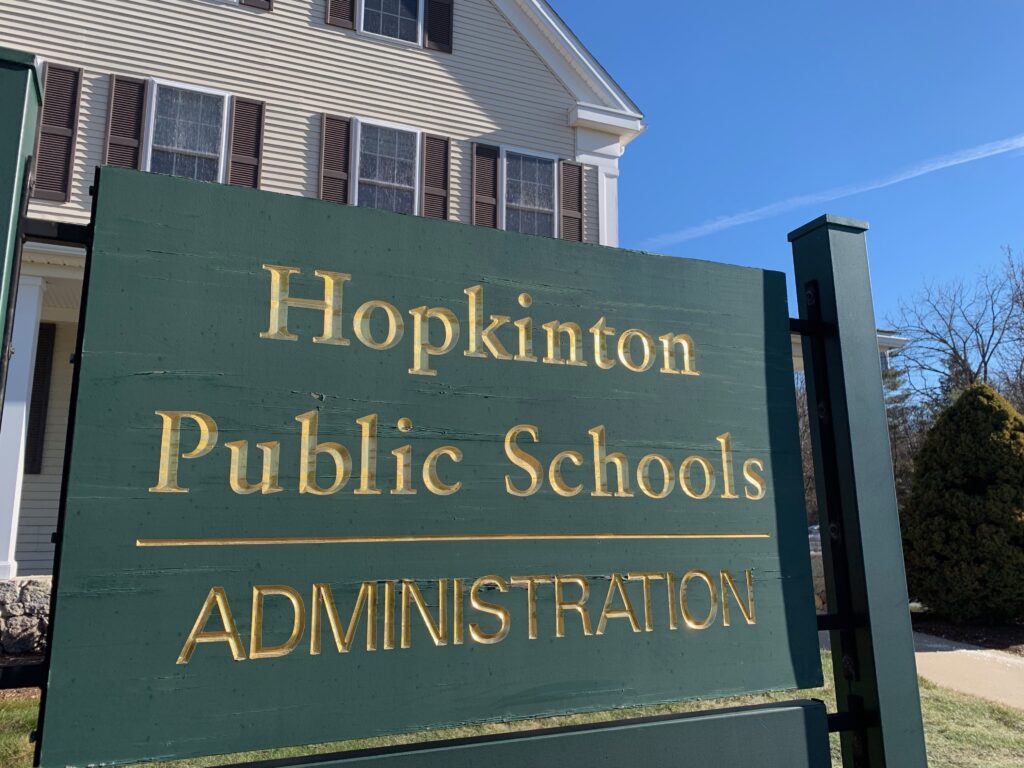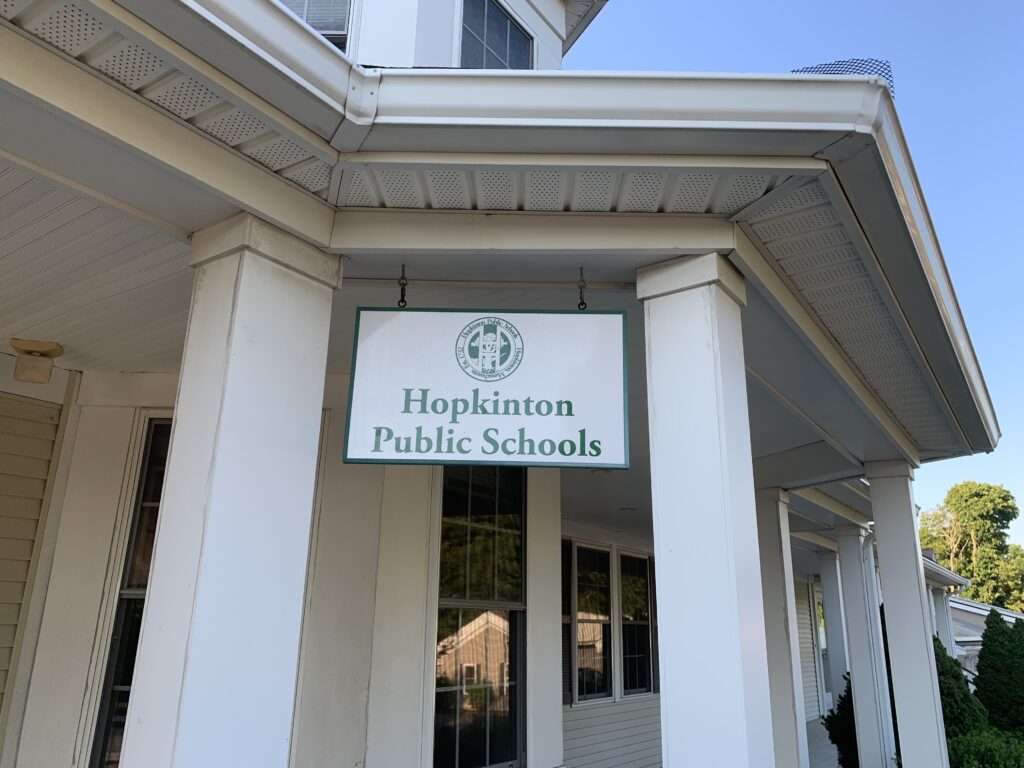Most students in the Hopkinton school district met or exceeded targets on the Massachusetts Comprehensive Assessment System (MCAS) tests, and most grade levels bounced back to pre-pandemic scores higher than the state’s averages.
The state, therefore, said the schools and district are “not requiring assistance or intervention.”
The results primarily show progress, said Assistant Superintendent Jeff LaBroad, who reminded the School Committee at Thursday’s meeting that MCAS is just “one piece of the pie” measuring and monitoring student performance.
He said the district sends the message to kids: “We want you to do well, but it’s just a test.”
LaBroad likened MCAS as a report card for the schools to see if they are “making sure students are having a great learning experience.”
By looking at trends in the test results, curriculum can be tweaked and other adjustments made as educators try to address areas where there may be shortfalls, he said.
Students in Grades 3-8 are tested in English language arts (ELA) and math, with fifth through eighth graders also tackling science/technology/engineering (STE). Eighth graders piloted a civics assessment and had a “great showing,” according to LaBroad. The older grades also take MCAS tests in the three subjects.
LaBroad’s presentation featured detailed data comparing state averages to Hopkinton’s results. It also demonstrated comparisons since 2019 (pre-pandemic). LaBroad noted the tests were suspended in 2020, were half-tests in lower grades during 2021 and returned to normal in 2022 and 2023.
The assistant superintendent highlighted different grades to give the committee an overview of results.
For example, Grade 3 English language arts had 77% of students meeting or exceeding expectations (21% exceeding, 56% meeting), while 20% of Hopkinton’s students partially met expectations and 3% did not meet them.
Grade 7 English language arts had 30% of students exceeding expectations and 45% meeting them. LaBroad pointed out the “exceeding” level was up from 14% during the previous year, where it was one of the lowest grades.
In math, several grades “bounced back” from previous years. Grade 4, for example, had 29% of students exceeding expectations, up from 17% in 2019. It also was a grade where kids went up from partially exceeding expectations to higher categories (24% partial in 2019 to 15% this year).
At the high school level in math, 50% met expectations and 37% exceeded them.
Other highlights:
In STE, Grade 5 had 75% of students meet or exceed targets. The percentages in Grades 8 and 10 were 68% and 83%, respectively.
There is “room for growth” in areas like Grade 3 ELA, where the number of students only partially meeting targets increased to 20% from 12% last year.
Grade 6 ELA also had more students partially meeting expectations at 20%, up from 11%.
LaBroad also touched on subgroups like English language learners, who showed improvement in math in Grades 4 and 5.
He said parents would be getting individual copies of their child’s scores in the mail.
He thanked students, teachers and families for their efforts. “Students work hard. They come in and give it their all,” LaBroad added.
Consequences of no new Elmwood discussed
During her superintendent’s report, Carol Cavanaugh talked about the previous night’s meeting of the Elementary School Building Committee and elaborated on the costs and consequences of a ‘no’ vote on the proposed new Elmwood School.
“A ‘no’ vote does not mean no spending. There is a lot to it,” said vice chair Amanda Fargiano.
Committee members talked about the challenges of trying to rehabilitate the current Elmwood’s HVAC system as well as pay for 12 more modular classrooms at Elmwood and 13 at the middle school.
While work is being done, trailer satellite classrooms would have to be used on-site, lunch shifts added and space found for subjects like art and music, she said.
Maintenance costs for the school built in the 1960s and loss of energy savings as well as Massachusetts School Building Authority (MSBA) funds are other issues members brought up.
Cavanaugh talked about the slim likelihood of getting back in the MSBA reimbursement line if the Town Meeting article fails. A big factor in their decision making, she said, is a show of community support, which a ‘no’ vote would negate.
She said it would be “throwing good money after bad” on an “end of life” school.
While the schematic plans were being developed, Cavanaugh said, some of the design decisions brought the costs for the proposed school down. She said there are still things “that would be removable” in the $158 million project, with the town’s share ultimately in the $111 million to $112 million vicinity.
Fargiano added that several resident questions were brought up at the ESBC meeting, many of them involving traffic. She noted that “there is a lot of design to go” if the new school is approved.
Fargiano noted architects will refine details and “some decisions may move one feature out for another,” but never to exceed the voted-on budget number.
New hires approved; position consolidated
The committee approved a request to consolidate two vacant ABA paraprofessionals to create one full-time severe/intensive SPED teacher for the rest of the school year.
The position is needed to impact the caseload and provide direct intervention, according to the superintendent. The district is having difficulty filling paraprofessional vacancies, despite outreach efforts.
The committee also gave the go-ahead to hire an additional worker at each of the district’s five cafeterias. Funded through the School Lunch Revolving Account, the position is for 3.95 hours per day with an hourly wage of $15.39 to $18.15, or $10,942 to $12,904 per year.
Committee accepts various grants
LaBroad led the discussion about various grants that the School Committee was called upon to approve. These included acceptance of the Curriculum Equity Audit and Mental Health Needs funds for fiscal year 2024, totaling $60,000 and $85,714, respectively.
Also approved were Federal Entitlement grants totaling $188,703 and a Supporting Students’ Social Emotional Learning (SEL) and MTL Competitive Grant award from the Department of Elementary and Secondary Education amounting to $63,000.
Cavanaugh talked about Federal Entitlement grants called Individual with Disabilities Education Act (IDEA) Part B and C, totaling $995,782.
In other business, the School Committee established a committee to review the district’s Bullying Prevention and Intervention Plan. The plan was last updated in May 2022. Review is expected to begin in November, with a deadline of May 2024 for revisions.



















0 Comments